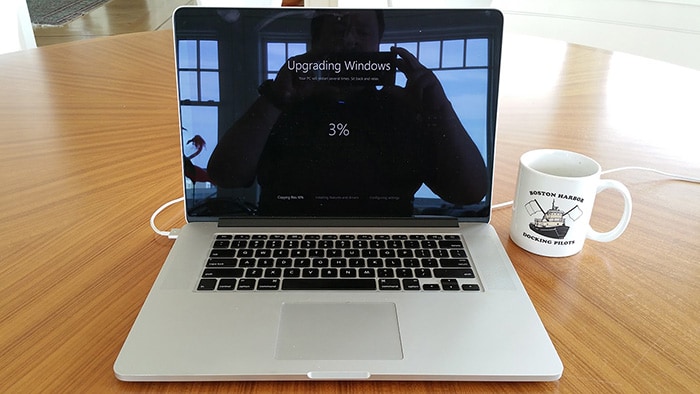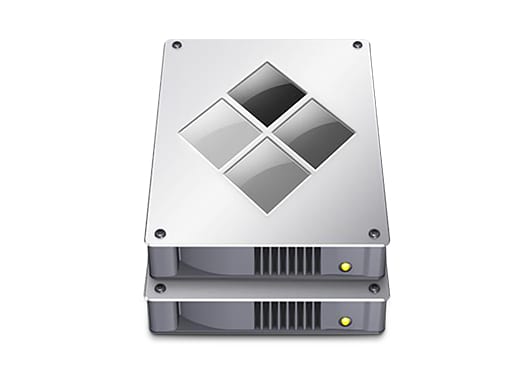

Do not select any other partition, as you could overwrite your macOS installation. Select the partition labeled Drive 0 Partition X: BOOTCAMP and that its size matches the size you set earlier with the Boot Camp Assistant.Most users will be fine with Home instead of Pro. Select the Windows 10 version you want to install.

If you do not have a product key, select "Skip" instead.
Enter your product key to activate Windows 10. Select your language, number formats, and keyboard if prompted. The display drivers will not yet be scaling Widows 10, so everything will be tiny (we'll fix this later in this guide). After the partitions are set, the Windows 10 installation will begin. You may see a black screen for several seconds as the partitioning process takes place. You computer will restart automatically and without warning. You can leave the majority to macOS if that is your primary OS, or give most of it to Windows 10 - it's up to you, but you cannot resize the Windows 10 partition at a later point without deleting the entire Windows 10 install and starting over.Ĭlick Install to start the process of partitioning the drive and installing Windows 10. Boot Camp Assistant will automatically locate the ISO file on your USB drive.Ĭlick and drag on the partition slider to adjust how much space will be allocated to the Windows partition.īy default, 49GB will be set aside. You'll find it in the Utilities folder in Applications. 
Leave your ISO-carrying USB drive plugged in.
#IF I USE BOOT CAMP ON A MAC WILL AN EXTERANL GRAPHICS CRD WORK FOR THE WINDOWS ON MAC HOW TO#
How to set up Boot Camp and install Windows 10 on a Macīefore continuing with the next steps, save anything you're working on, complete a backup of your Mac, and quit all running apps.







 0 kommentar(er)
0 kommentar(er)
